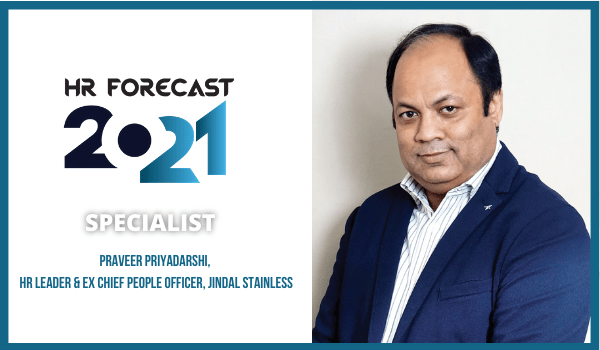2020: What to learn – what to erase
The year has presented discontinuities that have impacted everyone without exceptions. However, this has also resulted in creating opportunities to overcome and recalibrate ways of working. At the workplace, resilience and appreciation demonstrated by organisations, their leadership and workforces have been the key defining elements in handling the disruption presented by the pandemic. Enterprises have been tested on what they stand for— their visions, values and organisational culture. Policies and processes have been validated and course correction initiated. The spotlight now shines directly on leadership behaviour at all levels. The skill to adapt and manage, move goalpost scenarios, and come up with out-of-the box solutions has stood organisations in good stead. The ability to maximise more for less, and ensure business continuity tempered with empathy, integrity, and customer orientation has ensured survival and growth in these challenging times.
The area which really needs to be relooked at is complacence and reticence in taking ‘on-the-go’ calls. Leaders need to be agile and quick footed in anticipating and adapting with minimum turnaround time. Confident, capable and competent leadership is a prerequisite. A digitally native workforce, well trained in internal and external customer management, with the ability to manage ambiguity is essential for success.
HR has shown great agility and business acumen
The synergy among the functions in a business was one of the key enablers in effective handling of business operations during the pandemic. The HR function has helped manage the linkages and handoffs seamlessly. This is because HR has evolved over the years, from being just an administrator of policies, payroll and compliances, to a trusted business partner. Today, HR has a better understanding of the levers of business and the impact of a high-performing workforce in an organisation’s growth. There are several instances where HR was front and centre, working in close partnership with the cross-functional leaders in day-to-day management of business operations, instead of being on the sidelines. This has ensured continuity, and sustained performance and productivity levels. Anticipating change in working conditions, HR has proactively focussed on enabling remote work practices through fast deployment of technology enablers, re-calibrated work processes, engagement, reward, recognition and targeted communication initiatives, both internal and external.
The speed of change has ensured that HR continues to drive talent management, even while hiring the right fit, developing and upskilling staff, managing redundancies and ensuring actions around retention remain sharp as ever. Adoption of integrated technology solutions has provided insights and predictive analytics for taking agile and targeted decisions. Managing transformation by leveraging an inclusive collaborative culture with empathy and reviewing work policies and processes, such that they are aligned to current needs instead of maintaining status-quo, has been important. Clearly, CEOs and promoters have played the role of proactive sponsors and strong people leaders across all successful organisations. The level of understating of people challenges and the ability to appreciate the needs and tailor actions around them have helped organisations sail past challenges more effectively. The ones who are moribund and rooted have floundered in the face of strong headwinds.
“Information, by itself, does not provide value unless there are analytics, co-relations and insights”
C-suite wants results, and not just reports
Accountability for results and outcomes are the key deliverables for C-suite leaders. Decisions taken by them have an impact on shareholders, customers and employees. Hence, it is imperative that decisions be backed by information and context. Information, by itself, does not provide value unless there are analytics, co-relations and insights. As organisations evolve, there is a marked shift from diagnostics to predictive analytics for decision making in a connected organisation. Human resources has evolved to be in a position to provide information, which has a direct impact on performance, productivity and engagement levels.
By processing analytics from an employee’s lens, HR is able to gain a deeper understanding of the ‘what’, ‘why’ and ‘when’ of employee needs and how the organisation will be addressing them. It gives a better idea of employee expectations. Human resources has to manage the people agenda in partnership with other functions, primarily in the areas of succession planning by building a robust internal talent pipeline; upskilling, with technology as the underlying base; managing redundancies, handling performance and performers; and coaching leaders to ensure the workforce is motivated, engaged and connected.
Simply put, HR has to be a ‘value multiplier’ by driving the people agenda, managing workforce planning, realignment, learning & development, engagement & culture, performance & reward, interweaved with technology as the common thread, in collaboration with a cross-functional leadership group. It is time to reinvent, reinforce and reboot.



